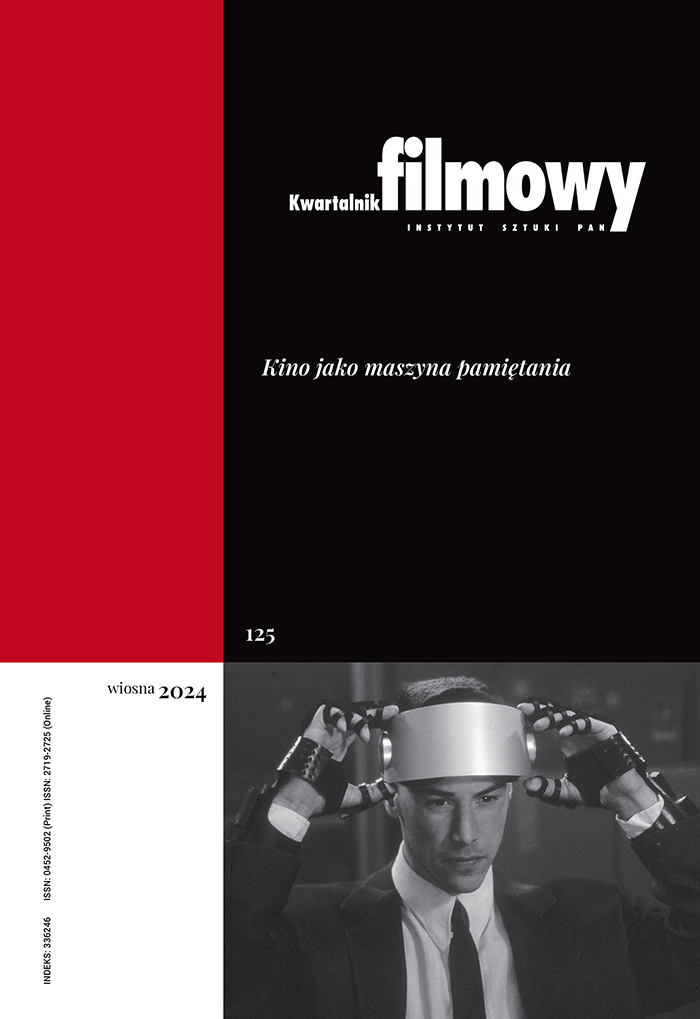Bill Douglas’ Trilogy – The Limits of Social Realism
Abstract
Bill Douglas’ film trilogy (My Childhood, My Ain Folk, My Way Home) tells the story of the director, and is a film version of his memoirs of a traumatic childhood. By returning to the places, people and events of his childhood, Douglas creates a documentary transfer - each shot documents a scene that is engraved in his memory. The work is deeply personal, and combines a highly subjective narrative with elements associated with social realism. The trilogy is both a story of a boy from a poor mining town and an accusation of an unjust social order that condemned this boy to a life that took one form rather than another. The author attempts to find an answer to the question whether the formula of social realism and extreme subjectivity of narrative are not mutually exclusive. The answer may lie in the artistic take on social cinema, that manages to reconcile these apparent contradictions.
Keywords:
Bill Douglas, social realism, autobiographyReferences
Caughie John, Don’t Mourn - Analyse: Reviewing the Trilogy, w: Bill Douglas. A Lanternist’s Account, red. E. Dick, A. Noble, D. Petrie, BFI, London 1993, s. 201-202.
Google Scholar
Graham Rhys, The Glimpse Given Life: An Elegy for Bill Douglas, http://www.sensesofcinema.com/2000/10/douglas (dostęp: 10.09.2011).
Google Scholar
Lay Samantha, British Social Realism. From Documentary to Brit Grit, Wallflower, London 2002.
Google Scholar
Noble Andrew, Bill Douglas, 1934-1991: A Memoir, w: Bill Douglas. A Lanternist’s Account, red. E. Dick, A. Noble, D. Petrie, BFI, London 1993, s. 24.
Google Scholar
Noble Andrew, The Making of the Trilogy, w: Bill Douglas. A Lanternist’s Account, red. E. Dick, A. Noble, D. Petrie, BFI, London 1993, s. 122-123, 126-130, 144, 153.
Google Scholar
Authors
Karolina Kosińskakwartalnik.filmowy@ispan.pl
Institute of Art, Polish Academy of Sciences Poland
Absolwentka kulturoznawstwa (specjalność filmoznawcza) w Instytucie Sztuk Audiowizualnych Uniwersytetu Jagiellońskiego. Pracę magisterską dotyczącą form buntu w kinie brytyjskim obroniła pod kierunkiem prof. dr. hab. Tadeusza Lubelskiego w 2002 roku. Pracę doktorską na temat postaci androgynicznej w brytyjskim filmie i kulturze popularnej obroniła w 2008 roku (promotor: prof. dr hab. Andrzej Pitrus) również w ISzA UJ. Od 2003 roku redaktorka „Kwartalnika Filmowego”.
Statistics
Abstract views: 713PDF downloads: 103
License
Copyright (c) 2011 Karolina Kosińska

This work is licensed under a Creative Commons Attribution 4.0 International License.
The author grants the publisher a royalty-free non-exclusive licence (CC BY 4.0) to use the article in Kwartalnik Filmowy, retains full copyright, and agrees to identify the work as first having been published in Kwartalnik Filmowy should it be published or used again (download licence agreement). The journal is published under the CC BY 4.0 licence. By submitting an article, the author agrees to make it available under this licence.
In issues from 105-106 (2019) to 119 (2022) all articles were published under the CC BY-NC-ND 4.0 licence. During this period the authors granted a royalty-free non-exclusive licence (CC BY-ND 4.0) to use their article in „Kwartalnik Filmowy”, retained full copyright, and agreed to identify the work as first having been published in our journal should it be published or used again.
Most read articles by the same author(s)
- Karolina Kosińska, Editorial , Kwartalnik Filmowy: No. 109 (2020): Architectural Space in Film
- Karolina Kosińska, Editorial , Kwartalnik Filmowy: No. 130 (2025): New Genre Identity
- Karolina Kosińska, Editorial , Kwartalnik Filmowy: No. 113 (2021): Film and Technology
- Karolina Kosińska, Editorial , Kwartalnik Filmowy: No. 125 (2024): Cinema as a Memory Machine
- Karolina Kosińska, Editorial , Kwartalnik Filmowy: No. 116 (2021): Cinema and Social Identity
- Karolina Kosińska, Editorial , Kwartalnik Filmowy: No. 119 (2022): (New) Film Theory
- Karolina Kosińska, Editorial , Kwartalnik Filmowy: No. 108 (2019): Film Production and Distribution
- Karolina Kosińska, Editorial , Kwartalnik Filmowy: No. 111 (2020): Senses and Affects
- Karolina Kosińska, Editorial , Kwartalnik Filmowy: No. 118 (2022): One Take
- Karolina Kosińska, Editorial , Kwartalnik Filmowy: No. 115 (2021): Form Film, Content Film











